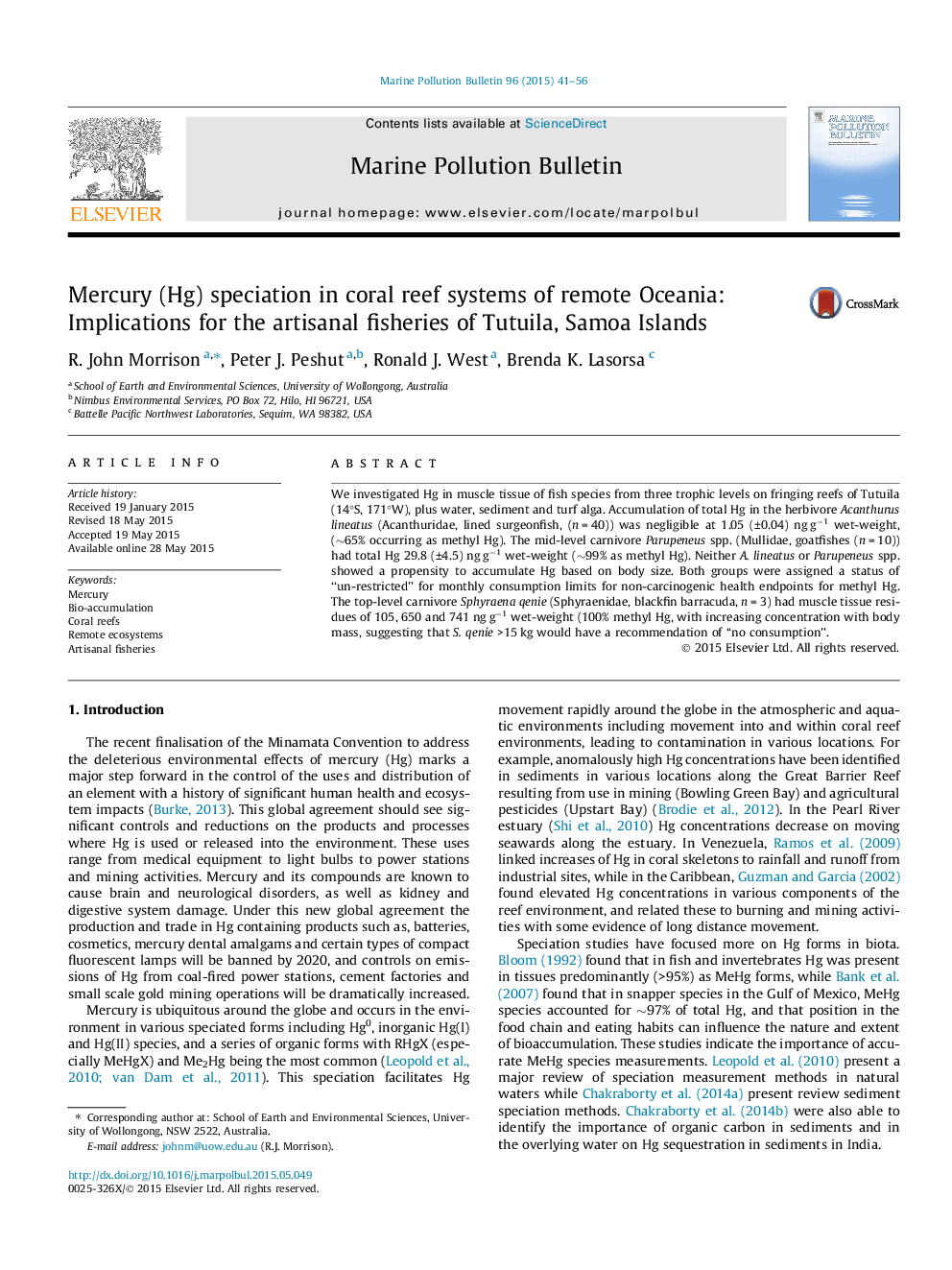| Article ID | Journal | Published Year | Pages | File Type |
|---|---|---|---|---|
| 6356547 | Marine Pollution Bulletin | 2015 | 16 Pages |
Abstract
We investigated Hg in muscle tissue of fish species from three trophic levels on fringing reefs of Tutuila (14°S, 171°W), plus water, sediment and turf alga. Accumulation of total Hg in the herbivore Acanthurus lineatus (Acanthuridae, lined surgeonfish, (n = 40)) was negligible at 1.05 (±0.04) ng gâ1 wet-weight, (â¼65% occurring as methyl Hg). The mid-level carnivore Parupeneus spp. (Mullidae, goatfishes (n = 10)) had total Hg 29.8 (±4.5) ng gâ1 wet-weight (â¼99% as methyl Hg). Neither A. lineatus or Parupeneus spp. showed a propensity to accumulate Hg based on body size. Both groups were assigned a status of “un-restricted” for monthly consumption limits for non-carcinogenic health endpoints for methyl Hg. The top-level carnivore Sphyraena qenie (Sphyraenidae, blackfin barracuda, n = 3) had muscle tissue residues of 105, 650 and 741 ng gâ1 wet-weight (100% methyl Hg, with increasing concentration with body mass, suggesting that S. qenie >15 kg would have a recommendation of “no consumption”.
Related Topics
Physical Sciences and Engineering
Earth and Planetary Sciences
Oceanography
Authors
R. John Morrison, Peter J. Peshut, Ronald J. West, Brenda K. Lasorsa,
